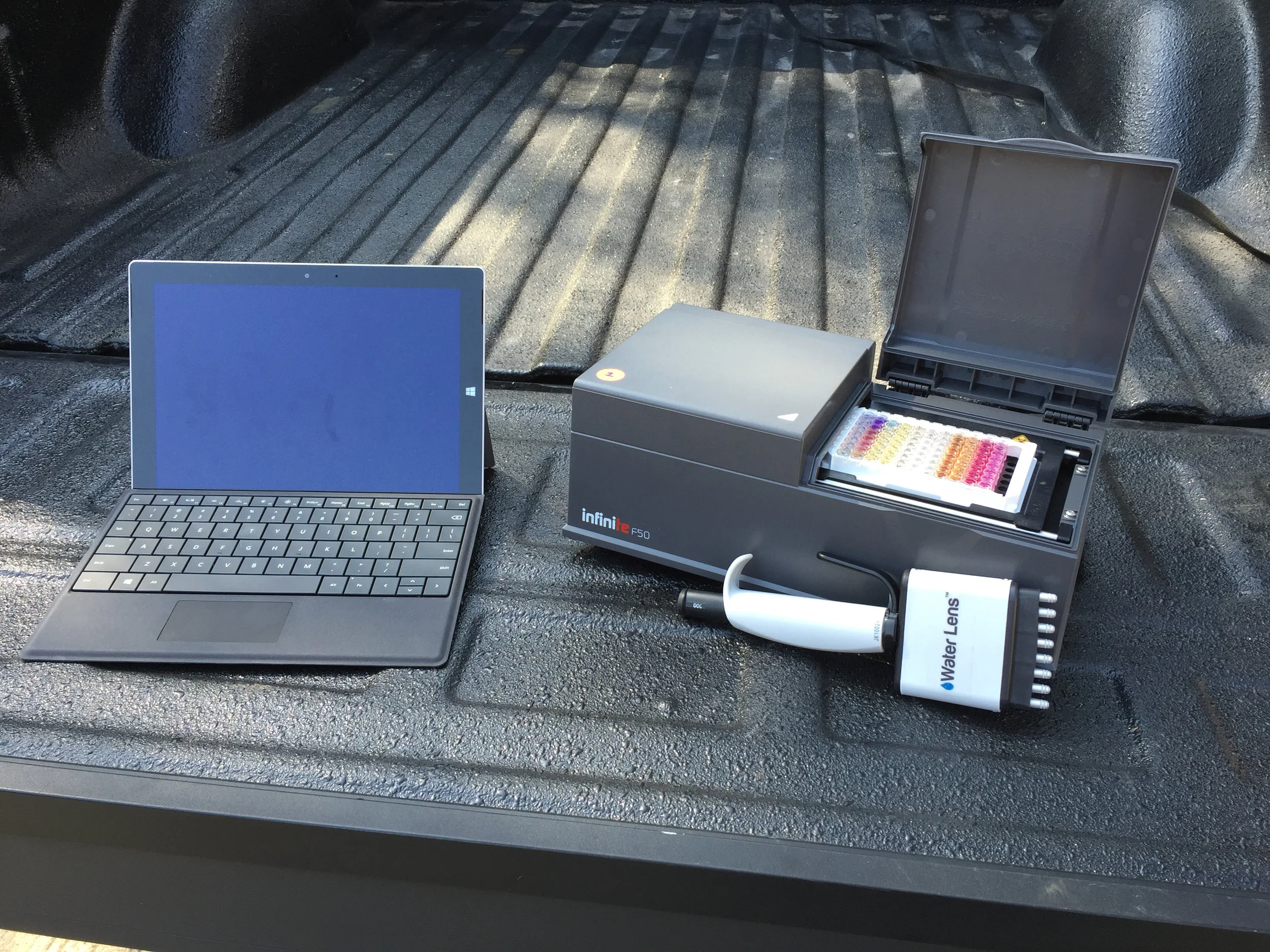Software
Much research and development has gone into our proprietary software for the interpretation of the absorbances generated by the chemistry.
Figure 1
The raw absorbance data generated by the plate reader is used to calculate concentrations via Water Lens' proprietary analysis software. Our software correlates the absorbance data to an analyte concentration by referencing the calibration curves, which we generate in our lab (See Figure 1). The calibration curves are generated using at least 12 calibration points with 8 replicates per point. Our limits of detection (LOD) are determined during this calibration as well. Traditional methods for determination of the LOD of a linear curve fit fail with non-linear curves. However, the Water Lens system can obtain an accurate LOD, as well as calculate uncertainty, for any point on the curve out to 3 standard deviations.
Once processed by the software, the resulting data can be recorded or saved in a number of ways. Legacy water testing platforms often rely on the recording of results by hand on paper, which is often filed and forgotten. The results generated by the Water Lens software may be saved as a report in a PDF format, printed to any printer accessible by the hardware or saved as a CSV file for import into spreadsheet programs or databases for more in-depth analysis and data mining.
While achieving an accurate result is essential to the performance of our assays, equally important is to avoid giving an incorrect result in the event of a test error. Our software is designed to identify any and all possible errors and report that an error was encountered rather than report a false answer.
Having an assay loaded into an 8-well strip provides 8 replicates of each individual test which are run simultaneously. If any small number of the individual wells gives a false response for any reason, the remaining accurate wells can be used to calculate a correct answer. Our software is equipped with an outlier detection algorithm, which locates wells that are reading incorrectly and ignores them during the final calculations.
Our software also has algorithms in place designed to identify when the results calculated from the assays present are incompatible with each other, (e.g., having a higher Magnesium reading than the Total Hardness reading). Such errors, while rare, are often the result of user error. The software is written to identify such issues and give an error message rather than a nonsensical result. In addition, the software is programmed to identify the source of the error, so that the user can re-run the test without repeating the same mistake twice.
While the chemistries developed by Water Lens are highly targeted, no binding motif has perfect specificity for its intended analyte. As such, the dyes/sensors used in the Water Lens kit to bind their target analytes are subject to some interferences. However, since Water Lens tests for multiple agents, the system can automatically correct for interferences and give an accurate result, without ever reporting an incorrect value that requires adjustment by the user.


